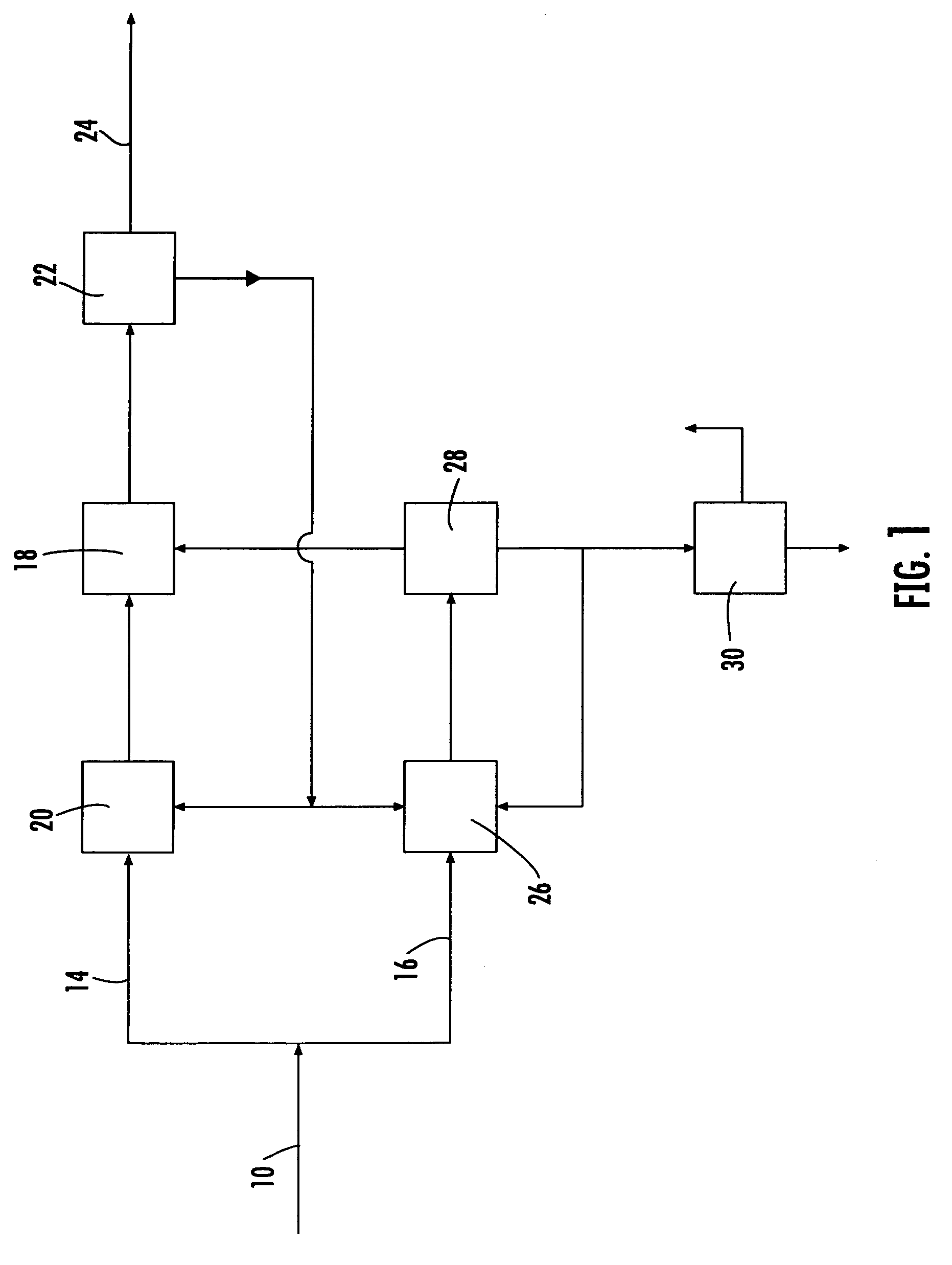System for wastewater treatment and digestion having aerobic and anaerobic treatment zones
a wastewater treatment and aerobic technology, applied in biological water/sewage treatment, water/sludge/sewage treatment, chemical instruments and processes, etc., can solve the problems of significantly larger digestion tanks, significantly slower anaerobic digestion, and waste of energy, and achieve the effect of less energy
- Summary
- Abstract
- Description
- Claims
- Application Information
AI Technical Summary
Benefits of technology
Problems solved by technology
Method used
Image
Examples
Embodiment Construction
[0021]Referring now to the drawings, various aspects of one embodiment of a wastewater treatment method according to the invention will now be described with reference to FIG. 1 wherein there is depicted a process for the treatment of a wastewater influent 10 which is contaminated with organic wastes. The wastewater stream 10 is initially split into two influent streams, a first wastewater influent stream 14 and a second wastewater influent stream 16. The first and second wastewater influent streams 14, 16 are simultaneously treated using an aerobic process and an anaerobic process as described in greater detail hereinafter. Both wastewater influent streams include organic waste contaminants.
[0022]The overall flow rate of the wastewater influent streams 14, 16 may range from about 0.02 mgd to about 100 mgd. Of this, from about 40% to about 80% of the overall influent is directed to the first wastewater influent stream 14 and from about 20% to about 60% of the overall influent is dir...
PUM
| Property | Measurement | Unit |
|---|---|---|
| temperature | aaaaa | aaaaa |
| temperature | aaaaa | aaaaa |
| residence time | aaaaa | aaaaa |
Abstract
Description
Claims
Application Information
 Login to View More
Login to View More - R&D
- Intellectual Property
- Life Sciences
- Materials
- Tech Scout
- Unparalleled Data Quality
- Higher Quality Content
- 60% Fewer Hallucinations
Browse by: Latest US Patents, China's latest patents, Technical Efficacy Thesaurus, Application Domain, Technology Topic, Popular Technical Reports.
© 2025 PatSnap. All rights reserved.Legal|Privacy policy|Modern Slavery Act Transparency Statement|Sitemap|About US| Contact US: help@patsnap.com



